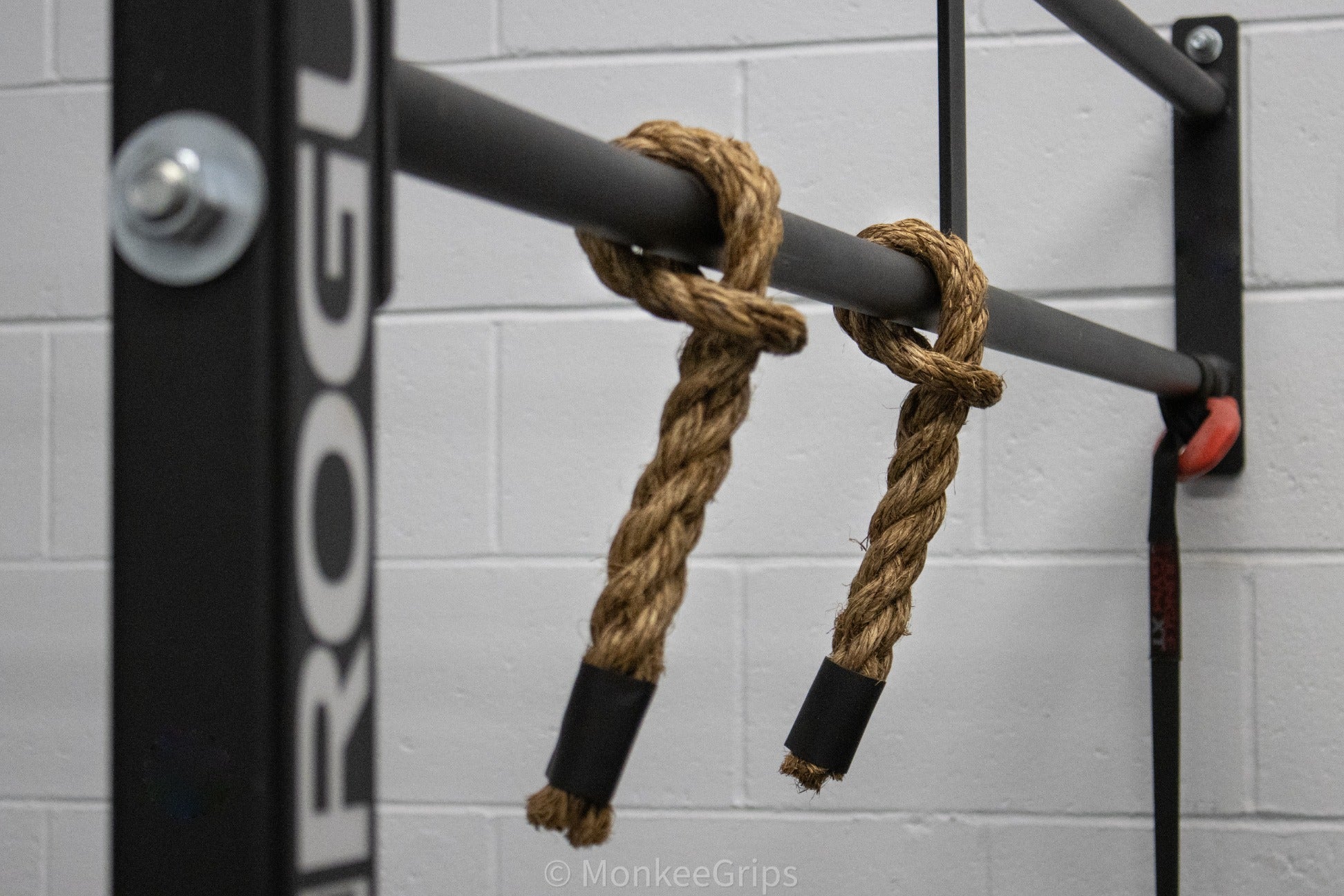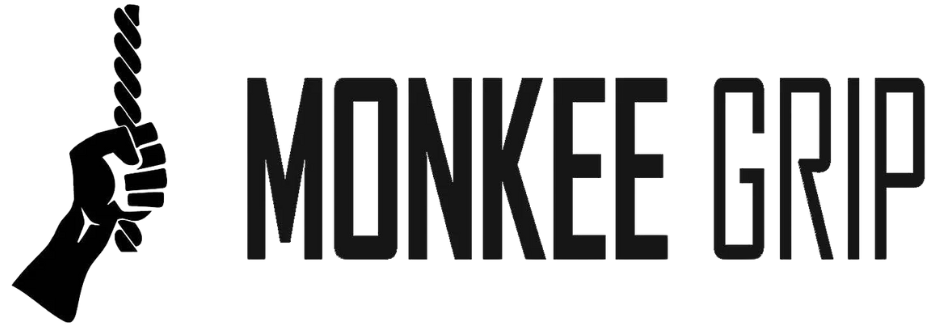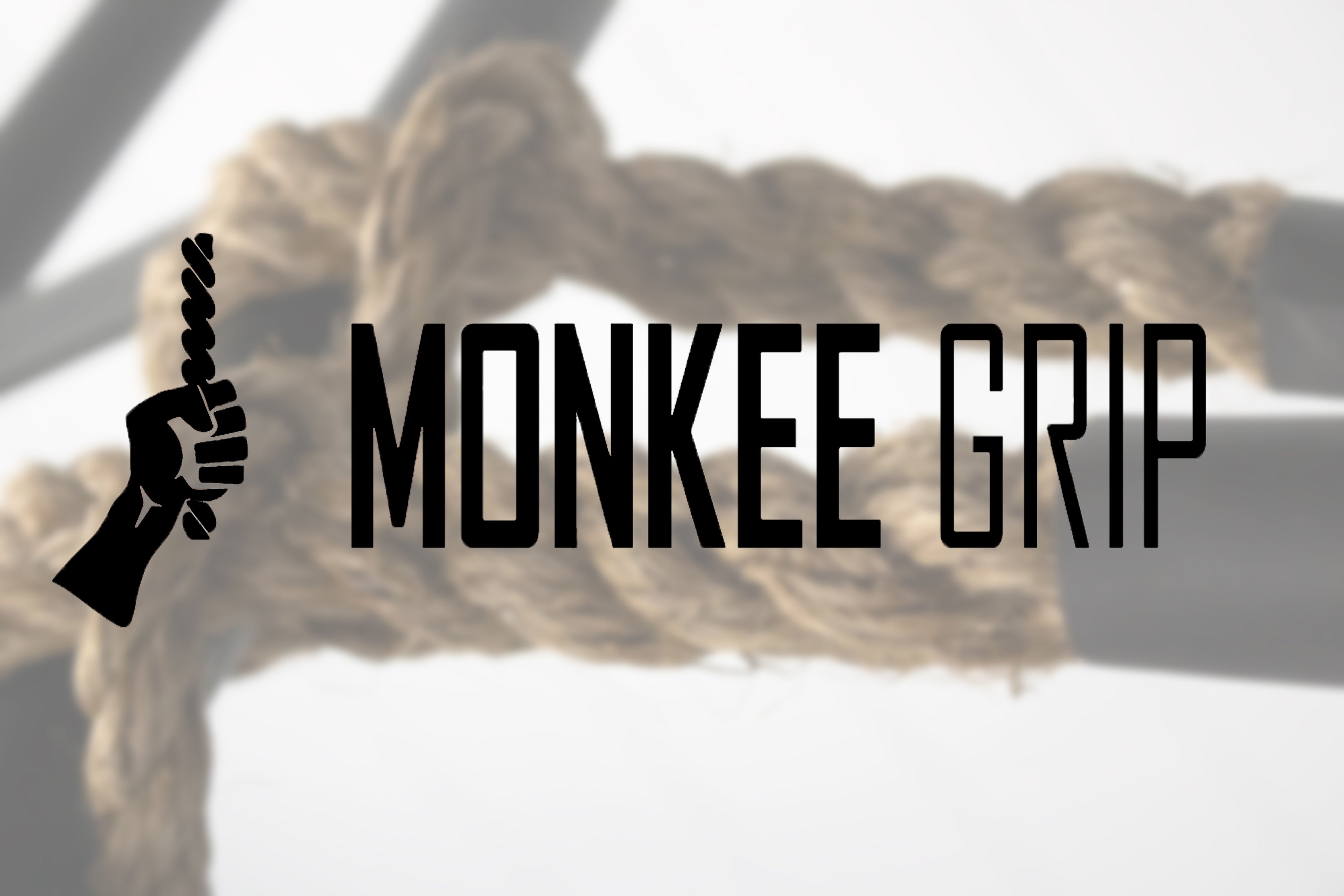
Understanding Grip: Why are Rope Climbs so Hard?
When it comes to grip strength, the orientation of the palm can decide which muscles are being engaged. Holding onto a horizontal bar, such as during pull-ups or chin-ups, requires a different type of grip strength than holding onto a vertical grip, such as a rope.
When you grasp a horizontal bar, your grip is supinated, this is a nerdy way of saying “your palms are facing away from your body”. This puts more emphasis on the flexor muscles of the hand and forearm, which are responsible for bending the fingers and wrist. This grip position is commonly used in biceps-targeting exercises such as pull-ups and chin-ups or carrying a reusable shopping bag. The fingers can hook and hold.
When grasping a vertical grip, such as a rope or a Monkee Grip, your grip is neutral, with your palms facing each other. This grip emphasizes the intrinsic muscles of the hand, which are responsible for fine motor skills, squeezing, and grip control. Vertical grip positions, such as rope climbs or using Monkee Grips for farmers carries and pull ups, require not only grip strength but also coordination of the muscles within the hand and wrist to manipulate the rope. This is why climbing a rope is so difficult, you have to squeeze and you have to squeeze hard just to keep from sliding down.
Incorporating both horizontal and vertical grip positions into your workout routine can assist you in developing a well-rounded grip strength as well as better overall hand and wrist health. Using Monkee Grip rope grips while performing exercises like farmer's carries, pull-ups, and rows can also be an effective way to challenge both the intrinsic and extrinsic muscles of the hand and forearm.
So, understanding the various types of grip strength required for various exercises can help you train more effectively and achieve better overall results. And, with Monkee Grip rope grips, you can test your grip strength and challenge yourself like never before.
When you grasp a horizontal bar, your grip is supinated, this is a nerdy way of saying “your palms are facing away from your body”. This puts more emphasis on the flexor muscles of the hand and forearm, which are responsible for bending the fingers and wrist. This grip position is commonly used in biceps-targeting exercises such as pull-ups and chin-ups or carrying a reusable shopping bag. The fingers can hook and hold.
When grasping a vertical grip, such as a rope or a Monkee Grip, your grip is neutral, with your palms facing each other. This grip emphasizes the intrinsic muscles of the hand, which are responsible for fine motor skills, squeezing, and grip control. Vertical grip positions, such as rope climbs or using Monkee Grips for farmers carries and pull ups, require not only grip strength but also coordination of the muscles within the hand and wrist to manipulate the rope. This is why climbing a rope is so difficult, you have to squeeze and you have to squeeze hard just to keep from sliding down.
Incorporating both horizontal and vertical grip positions into your workout routine can assist you in developing a well-rounded grip strength as well as better overall hand and wrist health. Using Monkee Grip rope grips while performing exercises like farmer's carries, pull-ups, and rows can also be an effective way to challenge both the intrinsic and extrinsic muscles of the hand and forearm.
So, understanding the various types of grip strength required for various exercises can help you train more effectively and achieve better overall results. And, with Monkee Grip rope grips, you can test your grip strength and challenge yourself like never before.



Leave a comment
This site is protected by hCaptcha and the hCaptcha Privacy Policy and Terms of Service apply.